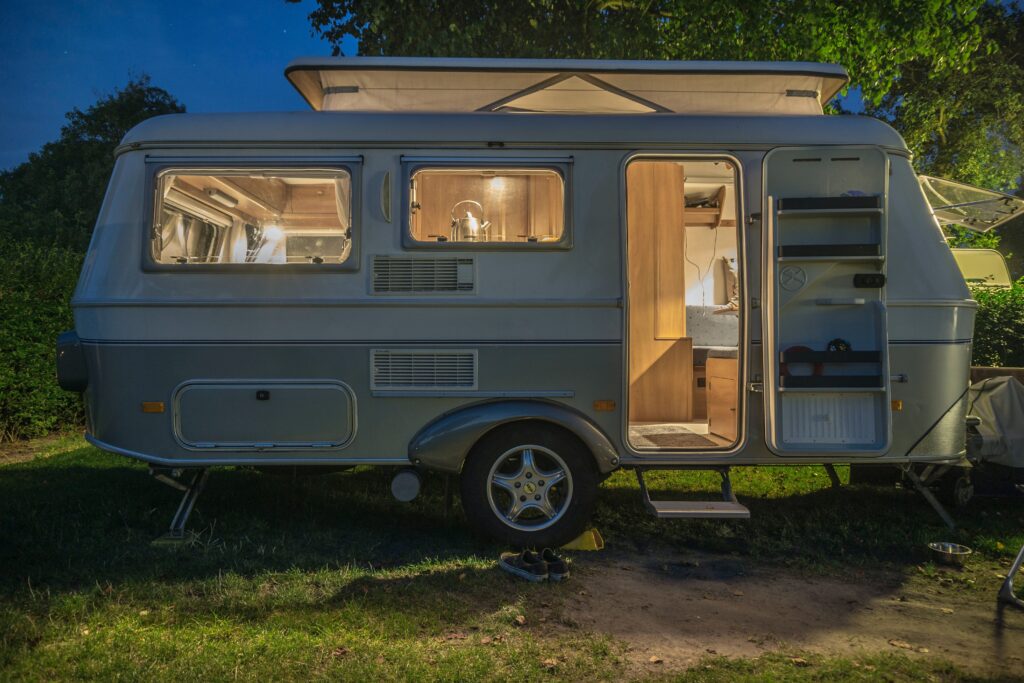When embarking on a camping adventure with your travel trailer, ensuring it’s properly leveled is a fundamental step for a comfortable and safe stay. In this guide, we’ll walk you through the importance of RV leveling, the tools you need, the estimated time required, and a step-by-step process to achieve a stable and enjoyable campsite setup.
Why Leveling Your Travel Trailer Matters
Leveling your travel trailer is more than just ensuring your coffee cup stays upright. Proper leveling provides a range of benefits:
- Stability: A level RV reduces the risk of rocking and swaying, enhancing your overall camping experience and sleep quality.
- Functionality: Appliances, such as the refrigerator and water heater, operate optimally when level, preventing damage and ensuring they work efficiently.
- Safety: A level RV reduces the likelihood of accidents or falls inside the trailer, keeping you and your fellow campers safe.
- Slidouts and Awnings: Leveling prevents strain on slide-outs and awnings, extending their lifespan.
Tools You Need for RV Leveling
Before you begin, gather these essential tools:
- Leveling Blocks: These come in various materials and designs, such as plastic, wood, or rubber. They’re used to raise the low side of the trailer.
- Bubble Level: Attach a bubble level to the interior wall of your RV to accurately determine its level.
- I’m sure almost everyone has one of these in their home. Make sure to have one handy in your travel trailer at all times. They have very inexpensive options on Amazon.
- Since we travel quite often, we invested in a LevelMatePRO on Amazon that is permanently secured in our camper for quick and easy leveling.
- Wheel Chocks: These keep your travel trailer from rolling while you’re leveling.
- Jack or Leveling System: If your RV doesn’t have built-in leveling jacks, consider investing in a hydraulic or electric leveling system.
Estimated Time
The time it takes to level your travel trailer can vary based on factors like experience, equipment, and terrain. On average, expect to spend around 15 to 30 minutes on the leveling process before unhooking your RV from your towing vehicle.
Step-by-Step Guide to Leveling Your Travel Trailer
Follow these steps to achieve a stable and balanced campsite setup:
- Choose a Suitable Campsite: Look for a relatively flat area for parking your RV.
- Park the Trailer: Back or drive your travel trailer into the desired spot, leaving room for slide-outs and awnings.
- Use a Bubble Level: Place a bubble level on the interior countertop. First, adjust the trailer’s position by using leveling blocks under one side of your tires, until the bubble is centered for side-to-side leveling. This may take a couple of tries before it’s where you want it to be. For front-to-back leveling, you will use your trailer tongue leveling system until the bubble is centered.
- Chock the Wheels: Once the RV is positioned correctly, place wheel chocks on both sides of each wheel to prevent movement. Do not skip this step!
- Stabilize the RV: Extend stabilizer jacks to further enhance stability. Remember, these are not designed to lift the trailer; they’re meant to reduce movement.
- Final Check: Walk through the trailer to ensure all appliances, doors, and cabinets operate smoothly and securely.
- Enjoy Your Stay: With a level RV, you’re ready to fully enjoy your camping experience with peace of mind.
Remember that practice makes perfect. As you gain experience, you’ll become more efficient at leveling your travel trailer. By following these steps and using the right tools, you’ll create a safe and comfortable home-away-from-home on your camping trips.
Some of the links in this article may be affiliate links, which can provide compensation to us at no cost to you if you decide to purchase something. These are products we’ve personally used and stand behind. We have put hours into creating a guide for our audience for the little percent we receive in return is appreciated. This site is not intended to provide financial advice. You can read our affiliate disclosure in our privacy policy.

